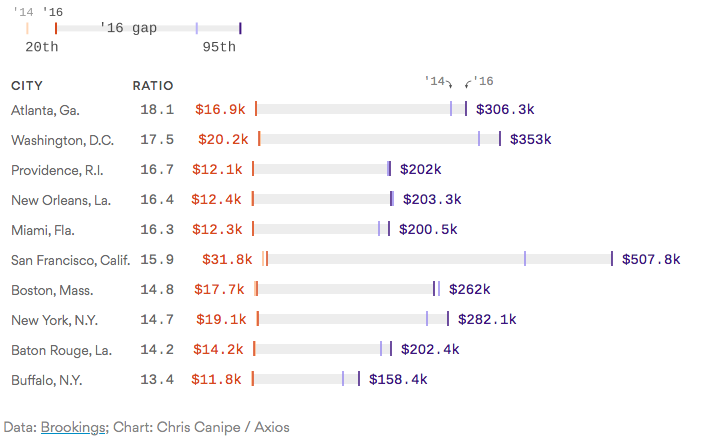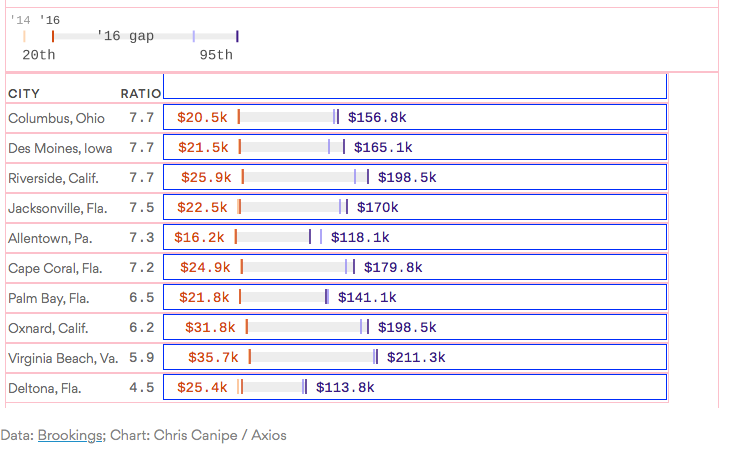Primary tabs
Where U.S. Income Inequality is the Most Severe
By Chris Canipe, Caitlin Owens
Axiom.com
A new study of income inequality could be bad news for those expecting the GOP's tax cut to trickle down to the middle class. The report by the Brookings Institution found that some places saw shrinking gaps between the top and bottom of the income scale between 2014 and 2016 — but in other places, the gaps grew much larger.
U.S. cities with the largest income gaps
Between the 20th and 95th income percentiles in 2014 and 2016

Why this matters: This shows gains on one end of the income scale don't necessarily translate into gains at the other end, at least in the short term. It also suggests that different places have different economies, meaning one-size-fits-all national policy solutions aren't likely to be universally successful.
U.S. cities with the smallest income gaps
Between the 20th and 95th income percentiles in 2014 and 2016

The back story: The report looks at income inequality levels for the 100 largest metropolitan areas in the U.S.
Key quote: "At least in the short run, city and metropolitan income trends do not suggest the existence of a rising tide lifting all boats, but rather separate ebbs and flows for households at different extremes of the distribution."
- "Even if ... local innovation economies generate greater opportunities for workers in less-skilled industries, those opportunities may not materialize overnight, and low-income workers and families could get priced out of a city in the meantime."
Takeaways:
- While more cities saw declines in income inequality from 2014-2016, more metropolitan areas saw increases in income equality over this time period.
- Some of the biggest changes in income were among wealthy households in cities that are home to booming technology industries like San Francisco, Austin and Seattle.
- Trends at the top of a place's income distribution "had little relationship" to trends at the bottom of the distribution.
- Even if a place's income inequality ratio didn't change, the gap between different income groups' earnings could increase. For example, in San Francisco the ratio remained the same, but the gap between the 20th and 95th income percentile grew by $114,000.
Click Here to see the full article.
























